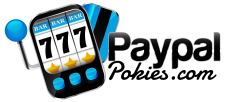What are the six important essentials to understand about PayPal as a newbie?


If you are new to PayPal then you need to understand few basic and important essentials before you start using Paypal. First thing you muse know that PayPayl is an easy payment solution for individuals and businesses and currently has over 210 million active account holders. Also registering yourself with PayPal is easy as all you need is an email ID, password and your bank account or credit card details. So before you enter PayPal for the first time here are the important things to know about PayPal.
1. Know the PayPal tax obligations
Remember that PayPal transactions are not taxed in Australia but your income is taxed. But if you are a US resident and have a small business in Australia with your gross payments exceeds $20,00 and 200 separate payments for goods and services, you need to know that a 1099-K will be required as part of your fiscal year taxes. If you reach that point, you’ll be required to enter your tax ID/Social Security Number(SSN) or Employer Identification Number (EIN) for IRS purposes.
Also note that the $20,000 threshold includes any accounts tied to the tax ID/EIN number tied to your business. Additionally, as a gross amount, the total includes all fees (shipping, sales tax, etc), and any refunds, discounts, credits, etc. are not excluded.
2. You have to understand your account limitations
To help keep your account safer, and to ensure PayPal meet their legal and regulatory obligations, PayPal periodically review all accounts and may temporarily limit what you can do with PayPal. Account limitations prevent you from completing certain actions with your account, such as sending, spending and withdrawing money and, in some instances, receiving it. When PayPal limits your ability to manage your own money, it’s either because they’re concerned about your financial safety or are legally required to do so. They need to comply with laws such as the Australian Anti-Money Laundering and Counter-Terrorism Financing laws, or the US Foreign Account Tax Compliance Act (FATCA).
This can happen when PayPal suspect someone could be using your account without your knowledge; your bank has notified PayPal that someone has used your card without your permission, or that there have been unauthorised transfers between your bank and PayPal accounts. Also if you’re engaging in high-risk buying or selling activities, like selling high-value items or in an industry that is more susceptible to disputes and chargebacks or buying or selling items or services prohibited by their Acceptable Use Policy.
3. You should know how to exclude PayPal from Google analytics referral traffic reports
Monitoring web traffic is essential to making informed decisions about your online and offline presence, so accessing the most accurate information is important. If you’re currently using PayPal on your site, you may also be noticing an increase in referrals stemming from the PayPal.com URL.
When a customer decides to complete a purchase on your site using PayPal, and they momentarily leave your site to complete the transaction, Google views their return to your site as a new session; therefore, PayPal takes credit for the referral even though it was just a momentary blip in the checkout path.
You can solve this by making a few easy updates to your Google Analytics account. First, you’ll need to use a Universal Analytics tag on the account. Then, using the Admin panel, you can add PayPal.com to the Referral Exclusion List. This will prevent Google from recognizing the customer’s reentry as a new session, helping you keep better tabs on who really is sending you traffic.
4. Know how to reduce chances of account freezing or limit policies
As talked above about PayPal’s account limitations, you need to know as how to reduce such chances of Account Freezing or limit policies. When you open your account, contact PayPal to verify that there are no limit on how much money you can accept in a day. Make sure all your information is accurate and consistent; that includes making sure that your address, phone number, and name appear the same exact way on your PayPal account as they do on your credit card and bank account.
If you’re expecting a big influx of cash to flow into your business through your PayPal account consider contacting PayPal ahead of time to let them know.
5. Know how to customize your payment page in PayPal
You should know as how to customize your Payment Page in Paypal to maintain branding throughout the shopping experience, which can help increase buyer confidence in your business set up. These pages enable users to customize all payment pages, included the Buy Now buttons, Shopping Cart, Subscriptions, and Donations. Once you select your page style, the updates will carry throughout the entire payment flow, creating a seamless brand experience.
Offering your customers the option to use PayPal at checkout is a great way to increase conversion and make the shopping experience easier.
6. PayPal Here allows business owners accept contactless payments
When accepting payment via credit card using one of two available card readers (swipe or chip), PayPal Here also allows business owners to accept contactless payments (phone to reader) as well as checks (via photos capturing the front and back). With a 2.7% fee per transaction, PayPal Here comes in only slightly less expensive than Square (2.75%), so they remain largely competitive in terms of expenses. Also if you’re already using PayPal and considering getting Square, it’s worth checking into PayPal’s physical solution for purchasing.
Finally know that PayPal is not the only online payment mode for you. Though PayPal was launched in 2012 most of the users or business owners also opt for Square and other methods for mobile POS payments.


